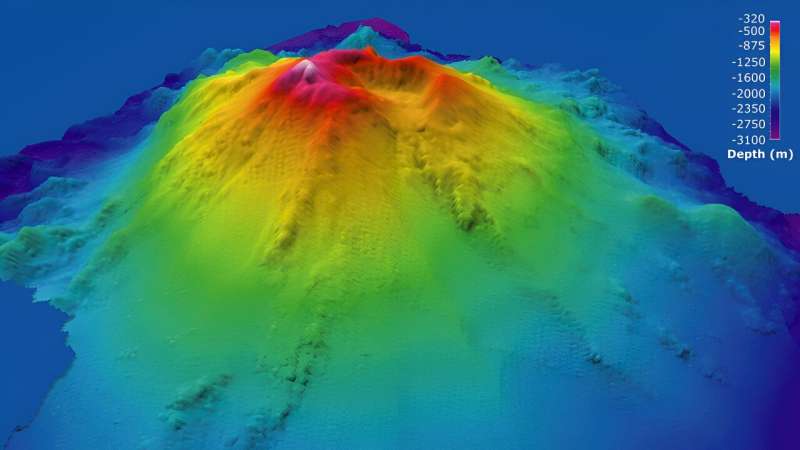This article has been reviewed according to Science X's editorial process and policies. Editors have highlighted the following attributes while ensuring the content's credibility:
fact-checked
peer-reviewed publication
trusted source
proofread
Subducted seamounts may lead to larger earthquakes

There are thousands of mountains scattered across the seafloor, many of which are thousands of meters tall. These seamounts may have significant impacts on seismicity when the portion of the ocean floor they are on is subducted beneath another tectonic plate.
Seamounts are typically made of hard, igneous rock that can dig into the softer sediments of an overlying plate. Whether seamounts increase or decrease friction along the subduction zone, and therefore the probability of large earthquakes, is a topic of continued debate.
Sungho Lee and colleagues have used numerical modeling to examine the possibility that seamounts act as either weak or strong asperities, defined as areas along a fault that are stuck in place. Then, the researchers drew from existing geophysical data taken from seismometers at a subducting seamount in the southern Japan Trench to explain patterns of seismicity in the region. The study is published in the Journal of Geophysical Research: Solid Earth.
Their modeling suggests seamounts function as strong asperities, essentially locking the nearby region of a subducting plate in place and preventing movement while the rest of the plate continues to slide. The resulting buildup of stress leads to periodic large seismic events the authors term "hang-up" earthquakes. Earthquakes of around magnitude 7 are known to occur at regular intervals at the leading edge of the seamount.
These findings contradict previous work indicating that seamounts reduce fault strength and promote small earthquakes. The researchers added that these previous hypotheses cannot explain observed seismicity patterns in the southern Japan Trench.
Even larger earthquakes found in the historical record that occur at intervals of several hundred years could be the result of the seamount itself rupturing along with surrounding regions, leading to more significant events and associated tsunamis, researchers suggest.
More information: Sungho Lee et al, Do Subducted Seamounts Act as Weak Asperities?, Journal of Geophysical Research: Solid Earth (2023). DOI: 10.1029/2023JB027551
Journal information: Journal of Geophysical Research: Solid Earth
Provided by American Geophysical Union
This story is republished courtesy of Eos, hosted by the American Geophysical Union. Read the original story here.




















